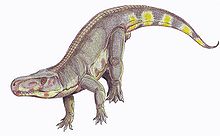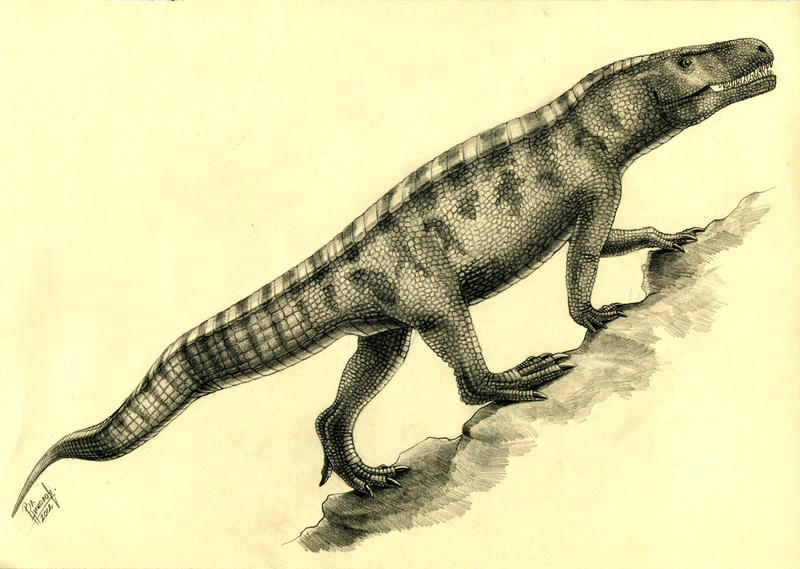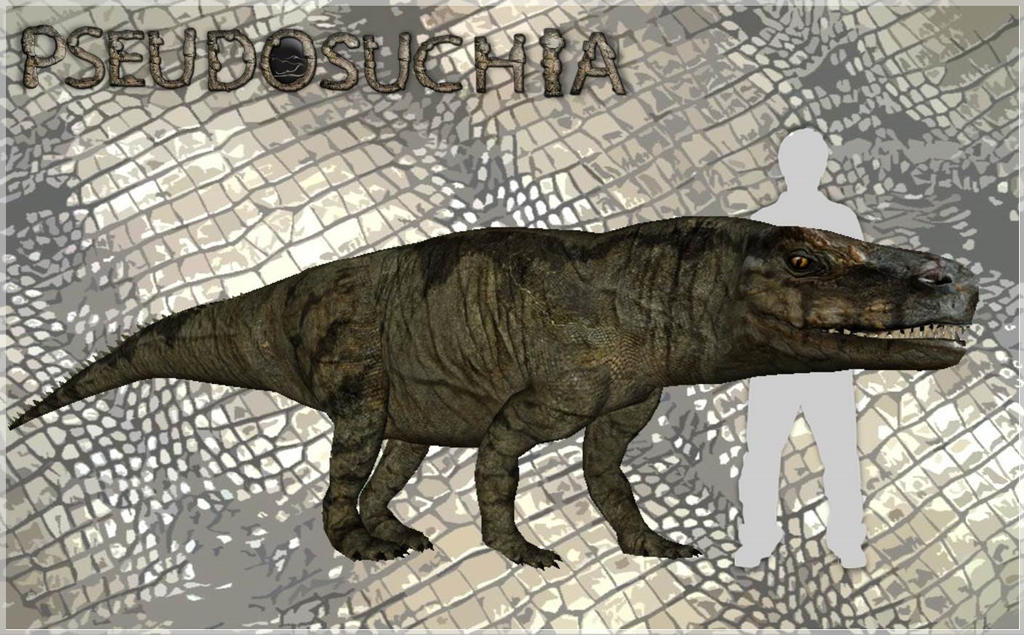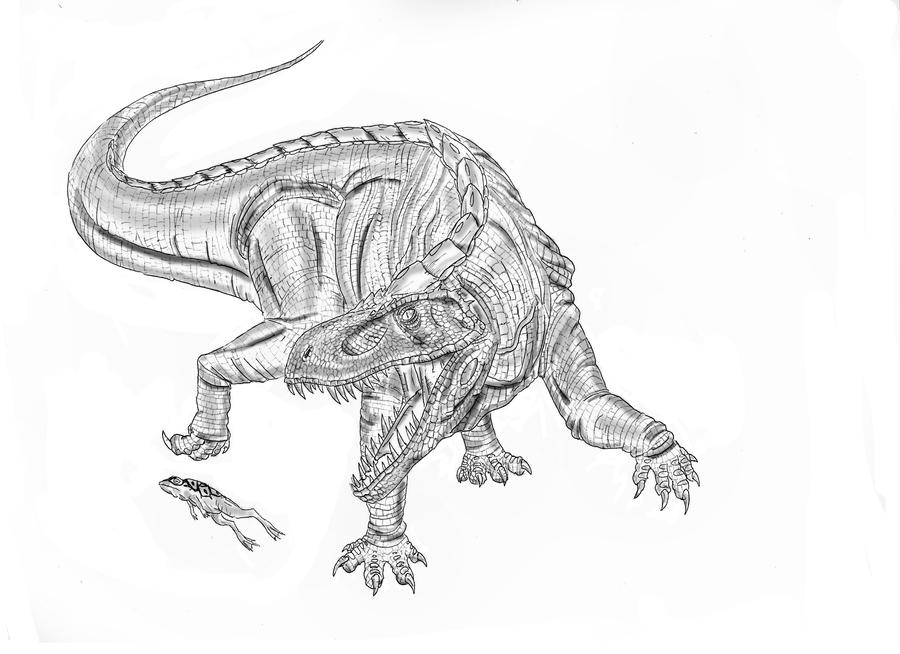Batrachotomus
Mounted skeleton of Batrachotomus kupferzellensis exhibited in the State Museum of Natural History Stuttgart
- Germany (copper cell, Baden- Württemberg)
- B. kupferzellensis Gower, 1999
Batrachotomus (Greek " Lurchschlächter " ) is a genus of extinct archosaurs from the Lower Keuper. The fossils were the type species for copper cell in Baden- Württemberg, in southwestern Germany, found.
Features
Armor and Gehapparat
Batrachotomus was a heavy-set, quadrupedes sham crocodile Prestosuchidae family, which could reach a length of five to six meters. On his back he had with the vertebrae connected by strong muscles armor plates ( osteoderms ). The animal was thus able to flex his spine and with a galloping gait to achieve high speeds while running. These flat bone plates ran from the nape of the whole spine and towards the tail end were smaller, osteoderms and vertebrae were placed in a 1:1 ratio. It seems that even the underside of the tail and abdomen and limbs were occupied similar Ticinosuchus ferox with osteoderms.
Like other Rauisuchier had Batrachotomus a straight position, that is, he held his legs almost vertically under the body, and not laterally angled such as recent crocodiles. His limbs were not the same length, so the front legs reached only about 70 percent of the length of the hind legs. The toe bones are poorly preserved, and the only well-preserved, a fifth metatarsal ( metatarsal ). However, it is believed that Batrachotomus had five toes on the forefeet and four on the hind feet.
Skull and teeth
Batrachotomus had a tall, narrow, 40 to 50 centimeters long skull. This skull had five windows on each side, one for eyes and one for the nostrils. Behind the eye openings ( orbits ) were located on each side of two skulls windows ( fenestrae temporal ). This ensured possibly for a weight reduction in the skull and allowed to continue to open the jaw. As a typical archosaurs Batrachotomus had a triapsiden skull, ie it each had an opening ( fenestra antorbitalis ) between the nose and eye socket. A fifth pair of small openings was in the back of the lower jaw ( mandibular fenestrae ).
The pine had narrow, sharp teeth in different size and shape ( Heterodontie ). The teeth on the premaxillary bone ( premaxilla ) were narrow, unlike those in the upper jaw ( maxillary bone that which most contributes teeth ). The upper jaw was home to 30 teeth, each premaxilla 4, and each maxilla contributed 11 teeth. The lower jaw was equipped with 22 teeth.
Habitat
Since 1977, give rich finds of flora and vertebrate fauna of copper cell insight into the environment of the Lower Keuper in Baden- Württemberg and leave on a swampy, flat landscape close ( Keuper Glades ), with islands that were overgrown with giant horsetails as Equisetites. By a rise and fall of the water level, these have always been associated with the mainland, so that a constant exchange of flora and fauna could take place. Besides Batrachotomus were found several species of fish, including some primitive ray-finned fishes. The most common small 10 to 20 inches long Ganoidschupper the genera Serrolepis and Gyrolepis. Also temnospondyle amphibians such Trematolestes, probably as today's Gavial captured fish, or the flat, ground-dwelling Gerrothorax from which you found so many copies of each other that one assumes that they settled crowded the floor of the marshes. The largest amphibian, which shared the habitat with Batrachotomus, was the six -meter-long Mastodonsaurus, also a great living in the water Temnospondylier. At its skeletons teeth marks were found by Batrachotomus which therefore his name " Lurchschlächter " got.





/Batrachotomus_1.jpg)

